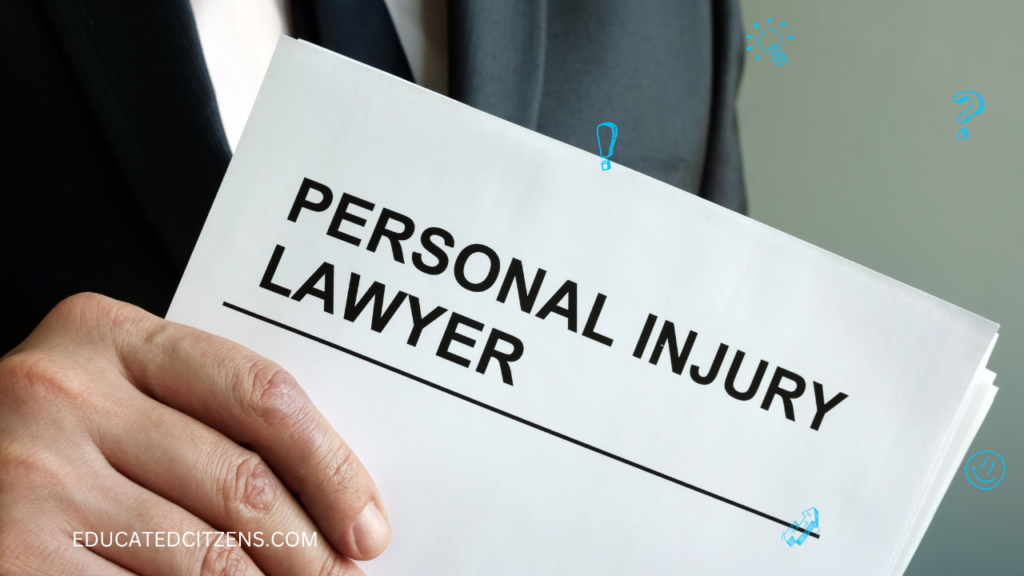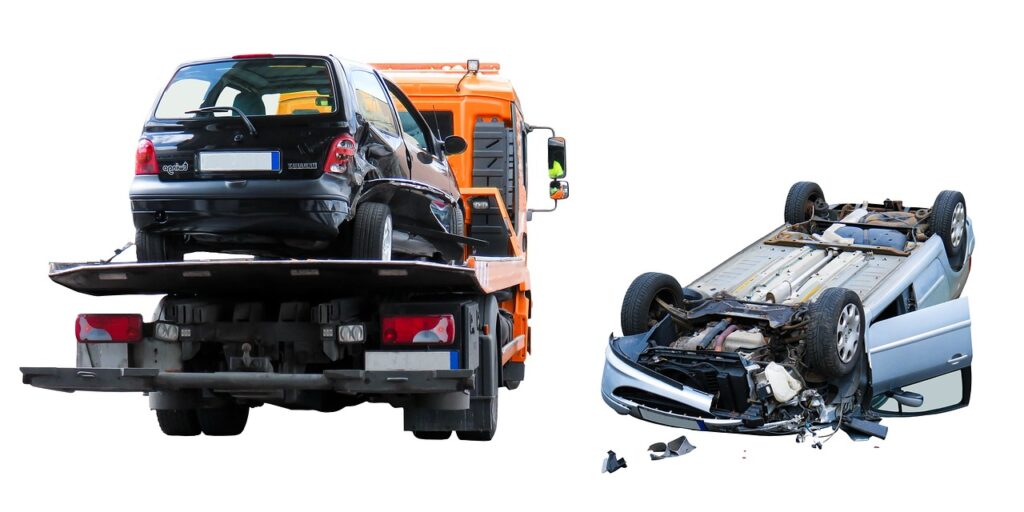Yes, you can go to jail for hit and run. In the UK and the US, hit-and-run offenses can result in unlimited fines, up to six months to 15 years prison-time, and penalty points on your license. The severity of the penalty depends on the circumstances of the incident and the level of fault of the individual involved
Page Contents
1. Legal consequences of hit and run
Moreover, hit and run accidents that cause deaths can result in felony charges carrying extremely harsh sentences. In California, a conviction for felony hit and run can lead to imprisonment in state prison for two, three or four years and a fine of up to ten thousand dollars. This is in contrast to imprisonment in the state prison for 90 days or one year that is potential legal consequence for a misdemeanor hit and run conviction. It is emphasized that the severity of punishment may be influenced by a number of factors.
These factors include whether anyone has been injured or killed as a result of the accident, whether a driver under the influence of alcohol or drugs has committed the offense (please refer to my previous drunk driving blog), and whether there are any additional offences such as driving without a valid license. These are known as apparent and hidden aggravating factors in sentencing outcomes.
Further reading: How to know if someone reported your license plate?
Apparent aggravating factors are those which are readily visible and which jurors or magistrates can take into account when deciding on the penalty. On the other hand, the identification of hidden aggravating factors requires evidence and intelligence.
They are dependent on a thorough judgement of the actions of driver and his or her previous criminal record. It is also possible for a hit and run driver to receive a sentence that is less severe than the statutory maximum. This is most likely when hidden mitigating factors, which reduce the level of culpability of an offender, have been recognised and submitted as evidence in the court.

Mitigating factors may include good character of a defendant, sincere remorse by the defendant, and the support of the family of a defendant. Hit and run offenses that occur in school zones or construction areas can also lead to more severe punishment. For example, Florida law states that leaving the scene of car accident in construction areas of certain size of traffic can lead to mandatory conviction with a punishment of a fine of up to five thousand dollars and a maximum jail time of one year.
1.1. Criminal charges for hit and run
The criminal charges for a hit-and-run mainly depend on whether the accidents only involved property damage or resulted in injuries or fatalities. In cases with property damage, a person who leaves the scene of an accident may be charged with a misdemeanor and face a potential sentence of up to a year in jail. However, if any person was injured or killed, the offense is typically elevated to a felony – with much more substantial penalties.
For instance, if the accident resulted in minor injury to someone else, the driver who left could be charged with a Class 6 felony in many states and face a potential sentence of up to five years in prison. On the other hand, where an accident led to serious injury or death of another person, the offense may be classified as a more serious felony – which could lead to substantially greater penalties.
In such cases, the motorist who was involved in the accident may potentially be charged with felony of the third degree – and, depending on the state involved, face a potential sentence of up to 5 or even 7 years in the state prison and a fine in the range of $15,000 to $20,000. It’s important to keep in mind that a driver could also be charged with such serious offenses even in cases where he or she was not at fault in the first place. For example, just the act of fleeing the scene of an accident can often lead to additional “failure to stop” or “leaving the scene” charges – regardless of whether the accident was caused by the driver or someone else.
And the potential penalties for such secondary offenses are relatively mild compared to those harsh penalties for hit-and-run – for example, a “failure to stop after an accident” may be classified as a misdemeanor and carry a potential jail sentence of maximum one year.
1.2. Potential jail time for hit and run
In the case of a hit and run resulting in a death, the offender can be charged with a first-degree felony. This conviction can lead to a prison term of up to 30 years as well as fines of up to $10,000. However, the prison term can go up to twenty years for a hit and run resulting in serious bodily injury. This is classified as a second-degree felony, with penalties of up to 15 years in prison and a maximum fine of $10,000.
Further reading: How does full coverage car insurance work?
However, if the offender left the scene of the accident on foot, such as running from the scene, a third-degree felony hit and run charge becomes a second-degree charge. This means that a third-degree felony offense – linked to leaving the scene of an accident with injuries – can lead to a prison term of up to five years and a potential $5,000 fine. It is important to note that a driver convicted of a hit and run is also subject to the mandatory fine (ranging from $500 to $1000) and addition of up to 6 months of jail time.

The same is true with any person convicted: in addition to any other penalties provided by law, the court shall direct the Department of Highway Safety and Motor Vehicles to revoke the driver’s driving privileges for a minimum of at least three years. For any person convicted, the driving privileges will not be reinstated until the said person has actually served the appropriate jail sentence imposed.
In addition to the prison term specified for this violation, the court may impose a fine (ranging from $1,000 – $5,000). The driver’s license revocation penalties for a hit and run – as described above – include mandatory recommended revocation for an adult. This length of revocation can be anywhere from at least three years to permanently, with the court having discretion to offer an allowance for the convicted to be able to obtain a license: but only for business or employment purposes. His privileges may only be reinstated after a minimum of three years if the court has given an allowance for such reinstatement.
If someone commits a hit and run crime and violates this very regulation himself; such as driving a car with the license being invalid on account of a prior court decision that specifically applies the same statute… the driver could be charged with a possible first-degree misdemeanor that results in a permanent revocation.
1.3. Fines and penalties for hit and run
The severity of fines and penalties for hit and run varies from state to state. A driver who has caused damage to property can face a fine ranging from hundreds to thousands of dollars. In addition, the court may impose a jail sentence for a driver who has left the scene of an accident. This penalty can range from as little as a few days to as much as several years in jail or state prison.
A driver who has caused injury or death to another person can face much more severe financial consequences. In such cases, the court can impose a fine of up to ten thousand dollars. In addition, a convicted driver’s license will be revoked or suspended for a specific period of time. Also, the court may order that the vehicle, or vehicles owned by the driver, be fitted with special number plates upon which the word “convicted” must be clearly displayed in red letters.
This type of number plate makes it much easier for police officers to recognize the vehicle and exercise their rights to stop and search it. The vehicle may also have to be forfeited to the state and subsequently sold. In the event of a fatal hit and run accident, the court has the authority to order imprisonment for up to twenty years. Some states have introduced harsher sentencing guidelines for drivers who leave the scene of an accident.
For example, in Arizona, a driver leaving the scene of an accident may be charged with a class 3 felony. This is the second highest level of offense and can lead to a jail sentence of up to seven years. There is no possibility of suspending the imposition of the sentence and the court is not able to grant probation to the convicted driver. As a result, a person who has been involved in a hit and run accident is likely to face an actual jail term.
In California, the period of driver’s license suspension for hit and run drivers has been recently increased to a maximum of four years. Also, a court may order that a vehicle, which is driven by a driver convicted of hit and run, be fitted with a special “interlock” device for one year. This device requires the driver to provide an alcohol-free breath sample before the engine will start. The driver must pay all installation, rental and maintenance costs for this device. Such financial penalties, in addition to any others imposed by the court, can put a convicted driver under considerable economic strain.
Hit and run cases in school zones or construction areas may result in more severe punishment. Some states have introduced specific legal provisions which lead to harsher fines and penalties for hit and run committed in these areas. For instance, in Florida, a driver who fails to stop and provide information after an accident which occurred in a school zone can be charged with a third degree felony.
This results in a combination of a fine not exceeding five thousand dollars and a prison term of up to five years. In Texas, the offense of failure to stop and render aid in a school crossing zone has recently been upgraded to a second degree felony. This is the third highest level of offense and can lead to a jail sentence of between two and twenty years. Also, a fine of not more than ten thousand dollars may be imposed.
2. Factors influencing the severity of punishment
Sometimes, a judge or jury might consider imposing a harsher or more lenient sentence depending on the presence and extent of injuries or fatalities caused by the accident. As a general rule, the more serious the physical harm caused by a hit and run, the more severe the penalties on conviction of the offender. Defendants with previous criminal convictions on their record are more likely to receive higher penalties than first-time offenders, and the punishment will be more severe if the defendant has prior convictions for similar traffic-related offenses, such as DUI or reckless driving.

On the other hand, if the defendant has a clean criminal record, there may be opportunities to argue for a more lenient sentence. Many states have mandatory minimum penalties for hit and run offenses. However, judges often have discretion to impose a harsher or more lenient sentence depending on the circumstances of the case.
It is important that the defense lawyer, prosecutor, and judge acknowledge that the defendant has shown genuine remorse and regret for having carried out the offense. For example, demonstrating to the court that the defendant accepted responsibility for the crime and made direct contact with the victim to apologize and offer restitution can be a powerful way to mitigate the sentence.
Legally, a school zone is a designated area surrounding a school, typically within 300-500 feet of the school’s property. Not all states define the penalty for committing a hit and run in a school zone under the criminal statutes. However, Florida state laws specifically provide for increased penalties if a driver commits a hit and run in a school zone or within an active area of road construction. Specifically, the court is authorized to impose a jail term of up to 5 years and a fine of $5,000 for an offense of leaving the scene of an accident within a school zone, in addition to other penalties which the defendant is liable to receive as a result of the crime.
Similarly, the law in Florida increases the classification of the crime from a misdemeanor of the second degree to a felony of the third degree for a hit and run committed within an active road construction or maintenance work area. It is usually hard for motorists using the road in school zones and construction areas to claim that they were unaware of the accident, due to the amount of attention and care required when driving in these areas. Therefore, the increased penalties in these areas work to deter and discourage drivers from engaging in conduct that may potentially compromise the safety of students, workers, and other road users.
But it is important to remember that criminal statutes and their scope of application may vary widely among different states, and there are constant changes and developments in individual state laws. Although the legal consequences of committing a hit and run is a pressing and immediate concern, it is just as important to be aware of the far-reaching and long-term effects a defendant could face if they do not seek professional and experienced legal representation. Hit and run is an offense with serious and wide-ranging penalties that can affect many aspects of an individual’s life, including personal relationships, domestic and international employment opportunities, and the ability to drive legally.
2.1. Presence of injuries or fatalities
Where the victim of a hit and run accident sustains an injury, it is likely that the penalties for the offense will increase. Although the precise definition of an ‘injury’ varies by state, it will generally include any physical harm that requires medical attention, no matter how minimal. In California, for example, the punishment for causing an injury to another person in a hit and run is up to one year in county jail, or a fine of between one thousand and ten thousand dollars, or both. Meanwhile, Florida law considers an injury to be a bodily injury that creates a substantial risk of death, serious personal disfigurement, or protracted loss or impairment of the function of any bodily member or organ.
Under Florida law, a driver who fails to stop after causing an accident that results in an injury could face a third-degree felony charge, which is punishable by up to five years in prison, up to five thousand dollars in fines, or both. The penalties are even more severe for hit and run incidents where a fatality is involved. In the majority of states, fleeing the scene of an accident in which someone has died will be deemed a felony.
For instance, in New York, a driver convicted of a hit and run involving a fatality committed on or after the fifteenth of November 2021 will face a class ‘D’ felony charge, which can result in a state prison sentence of up to seven years, a fine of up to five thousand dollars, or a period of probation. This is a significant increase from the previous penalties that were in place before November.
The emotional stress and trauma of being involved in an accident can cause drivers to act in irrational ways that they would not normally consider. Some drivers may leave the scene without even realizing that they have caused an accident, particularly in cases where the driver was unaware that another vehicle or person had been hit. However, the penalties for failing to stop and failing to report an accident to the authorities are in place to discourage drivers from panicking and driving away from a collision.
Hit and run laws across the United States are intended to fulfill two main purposes: first, promoting road safety by ensuring that those who cause accidents are held accountable and face appropriate punishment; and second, protecting road users who may need medical attention as a result of an incident from being left without help when a driver decides to flee the scene. Hit and run laws and penalties may therefore exist at both a state level and a local level, and different states and municipalities may have their own separate legal provisions and guidelines.
2.2. Previous convictions or driving record
Law enforcement and criminal courts take a hit and run offense seriously. In some states, for example, a person with previous convictions for traffic offenses, or for hit and run, will face minimum mandatory jail sentences, which means if you are convicted, the judge has no choice but to impose a jail sentence. Some legal consequences are in proportion to a person’s driving record, such as license suspension or revocation. This can last for a certain period of time prescribed by statute, or for life.
Offenders may be able to apply for and receive a restricted license to drive to work or school, but only after a certain period of actual suspension. However, if an offender’s license is revoked, it takes a lot more effort to get the privilege of driving back. On the other hand, a person with a clean driving record and charged with either a misdemeanor or a felony level hit and run is obviously in a much better position to avoid jail and receive alternative sentencing, such as probation, community service, or fines and costs.
This option is the excellent chance for an attorney to negotiate and have the charges reduced, because the offender is eligible to have the charged offense amended from a hit and run to ‘failure to give information and render aid’, which avoids a conviction of a hit and run. Offenders, if they are eligible, may have the records expunged and sealed from the public. This will help significantly from a job application perspective, as many employers cannot employ or terminate employees if they have any felony convictions. Expungement, as a matter of law, is only allowable if an offender has never been convicted of the subject crime or of any other crime, either misdemeanor or felony, and has not been adjudged as an habitual felony.
This remedy provides a chance for those one-time offenders, who have learned from the experience and took necessary steps to better themselves and their communities.
If the offender promptly contacts law enforcement, emergency medical services, or other similarly appropriate authorities within a reasonable time following the accident, the court might take this factor into consideration when sentencing. This is despite the general rule that prompt surrender to police or the sheriff must be without delay and before the commencement of any criminal prosecution.
It is always helpful to obtain the advice of an attorney if you are charged with hit and run. In general, showing remorse for the accident may be a mitigating factor when it comes to sentencing. This is especially the case if the accused can establish that they are genuinely sorry for what has happened and whether there are no aggravating circumstances to suggest otherwise. But the court has always indicated that they would be cautious in accepting expressions of remorse where the information has been obtained from the offender or the offender has not yet provided details of the circumstances of the appropriate case.

The court has previously said that a plea of guilty, together with a letter indicating remorse, should be treated with caution. However, if the offender willingly accepts his liability and expresses his genuine sorrow or regrets for his conduct, after legal advice and in an appropriate manner, that would very likely be a mitigating factor. On the other hand, any purported expression of remorse would be treated with great caution if it is made at a time when the identity of the driver and the extent of injuries are not known.
2.4. Hit and run in a school zone or construction area
If the hit and run offense was committed in a school zone or construction area, the potential jail time that can result from this offense can increase significantly. The article stresses that in most states, hit and run offenses are seen as more serious if a driver leaves the scene after a crash that occurred in such areas. As such, those who are found guilty of hit and run in school zones or construction areas are likely to face more severe penalties and a longer term of imprisonment than those who leave the scene of a crash that happened elsewhere. In addition, a charge of hit and run in a school zone or construction area is also more likely to attract the attention of prosecutors, and subsequently a more thorough investigation will be carried out by law enforcement officers.
The presence of more severe penalties and the higher chance of being prosecuted means that the legal consequences of a hit and run offense committed in a school zone or construction area can be very serious. While different states define a school zone differently, it usually pertains to areas within a certain distance from school grounds or areas that are designated for school-related activities.
Further reading: How long does a car accident settlement take?
It was noted that the enhanced criminal responsibility for hit and run offenses in such areas is legislated by section 116 of the New York State Vehicle and Traffic Law. This section provides that a driver who violates the duty to stop and give information after a motor vehicle accident that results in the injury of another person will have committed a class D felony if the accident occurred within a designated area around a school, between certain times while people are using the school grounds for school purposes.
It was also suggested that the tougher penalties for hit and run in school zones or construction areas reflect the policy consideration to protect the safety of vulnerable road users – attributable to the fact that there are often children and other road users that are exposed to dangers in such areas. However, the article failed to provide any empirical evidence to support this claim, i.e., whether it is indeed the case that vulnerable road users are at a higher risk of being involved in traffic accidents in these areas as opposed to other places.
3. Alternatives to jail for hit and run offenders
If you would like to explore alternative to jail options for a hit and run case, a consultation with the firm is free. In such a consultation, an attorney will review the basics of the case, establish what defenses may be applicable, and help you with the legal options in terms of fighting or resolving the case. Many lawyers in the firm focus on doing just that – fighting felony charges of all kinds.
Therefore, officers investigating hit and run cases sometimes engage in gamesmanship with defense counsel. Hit and run is typically a last best chance to investigate and exercise a great deal of control over an in-custody interrogation. The scope of discovery in Florida for hit and run defense is largely unlimited because the moment the prosecutor and defense counsel engage in discovery, all exculpatory evidence must be given to the defense. If there is a violation of discovery rules by the prosecution, the case might be dismissed. And because a high-ranking law enforcement officer is frequently given charge of an early investigation into a hit and run case, errors in police procedure and errors in handling evidence are far more common.
Another alternative to jail for hit and run offenders is a suspended or deferred sentence. A suspended sentence is similar to probation, except the person convicted must spend some time in jail (usually a short period, like a weekend or a couple of weeks) and then be placed on community supervision for the balance of the sentence. In contrast, a deferred sentence is an agreement between the person convicted of hit and run and the prosecution that if certain conditions are met within a period of time (normally 1-3 years), the charges (and any potential punishment) will be dismissed. Some conditions of a suspended or deferred sentence can include any or all of the requirements of a period of probation, plus conditions such as participating in victim impact panels, alcohol or drug treatment education and evaluation programs, and mandatory driver improvement programs.
Another alternative to jail for hit and run offenders is community service. In a courtroom, the judge will often discuss the notion of community service with the attorney or the person convicted of hit and run directly. Community service is essentially performing works of no direct benefit to the defendant but helpful to the general populace. It is possible that community service can be combined with probation. A common example of community service in a hit and run case is the person convicted working for the city or state transportation department by cleaning and maintaining public roadways over a period of time. However, a judge might allow as little as 6 days (48 hours) of community service in place of a 12-month jail sentence.
At the very least, in some states and in most everyday cases, jail time is avoidable. One alternative to jail for hit and run offenders is probation. Probation is a type of criminal sentence that allows a person to stay in the community and be supervised by a probation officer instead of going to jail. Some of the conditions of probation can include paying restitution to the victim, reporting regularly to a probation officer, getting prior approval for out-of-state travel, and obeying all laws (no further criminal conduct). The length of the probationary period can equal the possible jail sentence for a hit and run conviction.
3.1. Probation and community service
Another alternative to jail for hit and run offenders is probation. Probation allows offenders to serve out their sentence in the community under the supervision of a probation officer. Terms and conditions of probation may include things like regularly reporting to a probation officer, getting permission from the probation officer before moving or traveling, and submitting to random drug tests. Offenders may also have to satisfy other court-imposed conditions, such as maintaining steady employment or attending school. If the conditions of probation are violated, an offender may be arrested and required to go to a probation violation hearing.
At a probation violation hearing, a judge will determine whether the offender has in fact violated the terms and conditions of probation. If the offender is found to have violated probation, the judge has the authority to order an increased period of probation, modify the conditions of probation, or impose a term of incarceration, among other things. On the other hand, the judge may decide that the finding of a violation was unfounded and allow the offender to continue on probation as previously sentenced. Offenders usually have to appear before a probation violation judge, and the state is typically represented by a probation officer when such allegations are made. A person convicted for the first time of a hit and run may also get probation.
In California, for instance, the law gives judges the option of sentencing a first-time hit and run offender to formal probation, up to a year in jail, or a combination of probation and jail time. Offenders sentenced to rehab for a hit and run in California, on the other hand, are generally granted probation instead of a jail term. However, some offenses are deemed to have been committed so willfully or negligently that they may not be sufficient grounds for the imposition of probation. For example, if an offender fails to stop and disclose identity after a car accident that results in the death or permanent serious injury of another, California law mandates that probation may not be given. Additionally, if an offender is denied probation and is sentenced to state prison, they may still be eligible to serve under what is referred to as conditional probation.
Conditional probation is supervision in the community under the Department of Corrections, and offenders under conditional probation are considered state inmates. Inmates in the state prison must serve at least half their sentence before they can be considered for release on parole, and even then it is not guaranteed. It is important to recognize, however, that conditional probation may not be an available alternative to jail for hit and run offenders depending on the penalties associated with the offense and other relevant factors.
3.2. Driver’s license suspension or revocation
Driver’s license suspension or revocation means that your driving privileges are taken away either for a definite period of time or indefinitely. The severity depends on the state’s law and the circumstances of the case. In most states, the period of suspension or revocation is shorter for leaving the scene of an accident compared to a hit and run involving an injury or fatality. While your driver’s license is suspended, you are prohibited from driving in that state. If you continue to drive and are caught, the penalties could be more severe, such as arrest, imprisonment, and impoundment of your vehicle. In order to reinstate your license after a period of suspension or revocation, there are common requirements and steps that you need to fulfill.
First, you usually have to wait until the period of suspension or revocation has expired. Secondly, you may have to pay a reinstatement fee that ranges from $25 to $250, again depending on the severity and circumstances of the case. Thirdly, you might need to complete a driver’s education course, a defensive driving course, a substance abuse program, or comply with other specific requirements. Next, it is possible that you have to file an SR-22 or proof of financial responsibility with your state’s department of motor vehicles.
An SR-22 is a certification of insurance that proves that you meet your state’s auto insurance requirements. Your insurance company can electronically file SR-22 with the department of motor vehicles. However, if anything happens to the certification, such as cancellation, the insurance company will notify the state and your driver’s license may be suspended. Last but not least, you are expected to pass the standard licensing tests, such as vision and written tests, before the license is issued. Again, the precise requirements can vary from state to state. Well, this is a good lesson for hit and run offenders to think twice before deciding to drive away and leave the scene. Hit and run consequences, both legal and financial, can be quite severe, especially if the incident involves an injury or fatality.
However, the former is completely avoidable if you don’t leave the scene. It is not worth facing severe punishment, risking hardships to your family, and living with the guilt and regret for the rest of your life. It is important to consult with an attorney who is knowledgeable about the hit and run laws in your local area and has experience in defending such cases.
A knowledgeable hit and run attorney will assist in evaluating the strength of the government’s case, the likelihood of conviction, and also potential legal defenses. Also, the attorney can guide you through the complex legal process and give you a peace of mind during a difficult and stressful time. A consultation is absolutely free, and if you decide to hire an attorney, the attorney will represent you on a reasonable fee and even offer a payment plan. So, let’s start protecting your legal rights and minimizing the potential hit and run penalties.
3.3. Mandatory defensive driving courses
Mandatory defensive driving course is a course mandated by the court for individuals who have been convicted of a specific driving violation. This class is designed to teach defensive driving techniques, offer education about state driving laws, and enhance a person’s overall knowledge about safe and lawful driving.
A variety of specific topics are covered by the class, including: safe driving habits, rules of the road, driving in a variety of different conditions, and the dangers of impaired driving. The class itself is generally a number of hours long and may meet once a week or for several hours a day to complete it in a certain time frame. The curriculum for the class is set by state law and covers mandatory topics as approved by the court and driving experts. Students in the class can expect not only to have to listen to the teacher but also to be involved themselves.
It is very common in many driving courses to have group discussions, to watch videos, and perhaps even to have guest speakers. Most classes will also have quizzes and exams that students will be required to take and pass. Obviously, all of the class time, tests, and any other requirements must be completed and done so in a timely manner in order to satisfy the sentence imposed by the court. Lastly, hit and run drivers may be ordered to pay restitution around their completion of a class. Restitution is money that is intended to cover any expenses that can be directly or indirectly linked to the hit and run accident.
For example, restitution might be owed to an injured person to cover medical costs or to an insurance company that has paid for damage to a car. If a person defaults on paying the owed restitution, this can result in penalties such as longer jail time. Hit and run drivers are thus strongly encouraged to make sure that they satisfy any restitution orders without delaying. What is required in a hit and run sentencing, including whether defensive driving might be required, can vary significantly from case to case.
In all situations, consulting with an experienced and qualified attorney is a critical first step in understanding what the penalties may be and in developing a criminal defense strategy. A well-informed attorney can assist a driver in better understanding the laws in their state and assist throughout the legal process from start to finish.
After a hit and run, usually the offender must attend a mandatory defensive driving class. The class itself covers subjects such as traffic laws, driving abilities, and defensive driving tactics. Often, convicted hit and run drivers must finish the class before they are sentenced. Courts often give defendants a set time period to finish the class so it is critical to check with both the court and the class administrator as to the earliest that a class can be taken and when it must be finished by.
If it is not possible to attend a class within a time frame set by the court, it is important to seek an extension of time. Sometimes the class can be offered through the local department of motor vehicles or other local agencies. Other times, there may be private companies that provide the class. Local DMV or court offices should have information regarding the locations and times that the class is offered in each area. It is important to note that it is not possible to attend an online class for a mandatory defensive driving requirement.
Hit and run defensive driving classes must be taken in person. Sometimes a conviction for a hit and run means that a driver must take an elevational driving class. This might be necessary, for example, if there are other moving violations on a driver’s record. These classes often go over some of the same information as the mandatory defensive driving courses but they may be set at a higher level. These courses can last for 16 weeks or longer and may include extensive driving training. However, a driver can work on getting credit for time served for the class before it is ordered by the court with the help of a qualified attorney.
4. Seeking legal representation for hit and run cases
It is important for individuals charged with hit and run to seek legal representation as soon as possible. An experienced attorney can provide valuable assistance at every stage of the case. A lawyer can help ensure that the statute of limitations does not expire, which is a common risk in hit and run cases.
Moreover, an attorney can advise the defendant on how to respond to questioning by law enforcement, insurance company representatives, and other attorneys. Importantly, a lawyer can also investigate the facts and circumstances surrounding the incident. This may involve visiting the scene of the accident, interviewing potential witnesses, and examining forensic reports.
Establishing the truth about what happened in the accident for which someone is accused of fleeing is important not only for the defendant’s individual interest and good name, but also for justice and prevention of further accidents. Additionally, an attorney can work with accident reconstruction experts and other professionals to build a defense strategy. A defendant is not required to prove his or her innocence in court—the burden of proving the defendant’s guilt remains on the prosecutor. However, developing and presenting a strong defense can increase the chances of a favorable outcome.
Legal counsel can also help a defendant to consider the available options, such as negotiating a plea bargain or pleading guilty to reduced charges. In some cases, accepting responsibility in exchange for a more lenient sentence can be the best approach. Defendants should also be aware that outcomes from criminal proceedings can have collateral consequences on civil legal matters such as personal injury lawsuits or insurance claims related to the accident. An attorney can help the defendant to understand these consequences and plan accordingly.
4.1. Importance of hiring an experienced attorney
Hiring an experienced attorney could mean the difference between serving jail time and getting off with a lesser punishment for a hit and run. A well-qualified hit and run lawyer will have experience in defending these sorts of cases and will be able to guide you through the process. This includes advising you on how to conduct yourself with law enforcement, which can play a significant role in the way your case proceeds.
As well as being able to help you navigate the legal system, a hit and run attorney who has been in practice for a number of years is also likely to have built up a good working relationship with key personnel within the courts and legal system such as judges, prosecution lawyers, and court clerks. These contacts can be hugely beneficial to the outcome of your case. Identifying the right attorney is vital for help with hit and run cases. It can be difficult to know where to turn, a good place to look is on the American Bar Association’s website.
The site has a searchable database of attorneys, where you can filter by location, area of expertise, and years of experience. Because there are so many practicing attorneys listed on the database, you may find that different lawyers and law firms are listed as having areas of specialization in hit and run cases. Always remember that the attorney you choose to hire should be suited to you and your individual needs, ignore pressure or coercive advertising, and instead opt for a legal representative who you feel comfortable and confident working with.
Lastly, it is a good idea to have a consultation with any prospective lawyers before you commit to the hiring process. Most attorneys offer a free initial consultation in which they can give you legal advice in relation to your case and you can start to get to know them. Always make use of these meetings to figure out if the lawyer is the right fit for you, and find someone who offers compassionate and skilled legal guidance tailored to your individual experiences and needs.
4.2. Gathering evidence and building a defense strategy
If you’ve been charged with a hit and run offense, one of the most important things your attorney will do is help gather evidence to build your defense. This will typically involve collecting evidence to show that you were not at fault in the accident and that you did not knowingly leave the scene.
At the same time, it can be important to gather what is known as “mitigating evidence,” which can be used to explain your actions or make it more likely that the prosecutor will agree to reduced charges or a plea bargain. This might include things like your good driving record, the fact that you have no prior criminal history, or evidence that the car accident wasn’t that serious. Your attorney will also want to start to build a comprehensive understanding of your case at an early stage. This will typically involve you providing a detailed account of everything you can remember from the day of the accident.
Don’t worry if there are things you don’t remember or are not sure about – it’s more important to be thorough and truthful. Your attorney will be able to work with you and the other evidence in your case to help strengthen this initial account. For example, they might suggest getting witness statements or other evidence to support particular parts of your case or to explain why you acted in a certain way.
4.3. Negotiating plea bargains or reduced charges
If you have been charged with hit and run, and you know that the evidence against you is strong, your attorney may recommend that you try to negotiate a plea bargain with the prosecutor. As with any legal case, the facts and the law will largely determine the strength of the defense.
And although the decision of whether to enter into a plea bargain should always be the client’s decision, it’s important to recognize the potential benefits of plea bargains. Often, the most significant benefit of a plea bargain is a reduction in the charge that has been brought against you. In some states, a hit and run can be punished as either a misdemeanor or a felony, depending on the particular facts of the case. For example, a hit and run that involves only minor property damage might be charged as a misdemeanor; an alleged offender might then enter into a plea bargain to have the charge reduced to “reckless driving” (which is also often classified as a misdemeanor), thereby avoiding jail time and significantly reducing the potential punishment.
Another common benefit of a plea bargain is a reduction in the severity of the punishments that can be imposed as a result of a conviction. As mentioned previously, a hit and run conviction can lead to a wide array of potential penalties – particularly jail time and fines. Negotiating a plea bargain to have the charges or the potential penalties reduced can therefore have a dramatic benefit on the ultimate outcome of the case.
Further reading: What Does a Personal Injury Lawyer Do?
Finally, plea bargains can also help to reduce the uncertainty and stress associated with a criminal trial. If you decide to reject a plea bargain and go to trial, you face the risk of being found guilty – which can then lead to the court imposing the maximum available penalties. By agreeing to a plea bargain, you can guarantee that the case will be resolved in a particular manner and eliminate the risk of increased penalties as a result of a conviction at trial.
4.4. Court proceedings and potential outcomes
In many cases, a hit and run charge will lead to a criminal court case. The exact process by which the case will proceed can vary depending on a number of factors, such as the severity of the offense. Generally, a prosecutor will issue a criminal complaint that will inform the hit and run suspect of the charges and require him or her to appear in criminal court at a later date.
At the first court appearance, the criminal defendant will typically be advised of his or her rights and may be required to enter a plea to the charge. The overwhelming majority – namely 90% – of all criminal cases are resolved through a plea bargain rather than proceeding to a criminal trial. In a hit and run case, a plea bargain might involve the hit and run suspect agreeing to plead guilty in exchange for a reduced charge or a less severe sentence. For example, the hit and run suspect might agree to plead guilty to a lesser charge of reckless driving instead of hit and run.
Alternatively, a plea bargain might involve the hit and run suspect accepting guilt for the original charge of hit and run, but in return, the sentence is more lenient. If the criminal hit and run case goes to trial, it will be down to the judge or – in serious cases – a jury to make a final decision about the defendant’s guilt.






